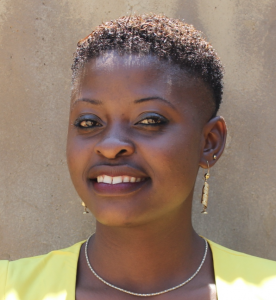Nang'anda Primary School is located in a remote, rural region of Kakamega County. The place is very green for most of the community members do crop farming and sugarcane planting. There are many trees planted all over, making the area cool and peaceful.
The school opened in 1952 by community members who wanted to see their children have a nearby education opportunity. It has since grown to have 587 students taught by 18 teachers and staff. They study English, Kiswahili, mathematics, social studies, science, religion, drawing, and reading.
A normal day begins very early in the morning as students wake up to prepare for the day. A class six student who was interviewed narrated that for her, she wakes up at 5 am so that she can get to school on time. She walks for 40 minutes on average to get to school. Students walk to school in a group because it's still dark out at that time of morning. Friendships are built during the walk to school. On arrival at school around 6 am, the pupils go to class for morning study hall. They take a break for cleaning chores like collecting litter, cleaning the toilets, and ensuring the handwashing facilities have water. The pupils must also fetch water before regular lessons start at 8 am.
Ensuring there's enough water is a risky task for students. It requires a strong individual and the water needs to be drawn with lots of care. They get water from an open well on school grounds, where a container is tied to a rope and lowered down through the hatch. Pulling the full container back up is hard work.
This dug well dries up when it doesn't rain for a long time, so students have to leave school in search of more water during parts of the year. They most often walk to an unprotected spring in the community, which is about one kilometer away.
The pupils struggle with the community members who also need to get water from their spring. The water is dirty, for it is open and the pupils just dunk their containers under the surface to get water. To cut down on long trips into the community, students are also asked to carry a container of water from home to school each morning.
The school does not have a storage facility for their water. Instead, they depend on the small containers that the pupils bring from home. The containers do not have covers and the storage is very little. This forces the pupils to get water throughout the day so as to ensure all the activities which need water are carried out - including drinking.
There are various negative consequences of safe water scarcity here. The school records a high number of absent pupils every week as they suffer from stomachaches and diarrhea caused by dirty water. Illness due to unsafe water and lack of sanitation creates health costs that claim a large portion of a poor household's income. Academic performance here also declines as time is wasted in search of water is much.
"The scarcity of clean water has been a challenge since the time I joined this school about five years ago now," reflected Deputy Headteacher Tembu.
"Many pupils are absent on a weekly basis and on inquiry, they are having stomachaches. Most of the pupils have poor health starting with their personal hygiene for when you look at the skin it tells you they do not have care. The scarcity of safe water at large in school reduces our learners concentration, performance, and score."
What we can do:
Training
Training on good hygiene habits will be held for two days. The facilitator will use PHAST (participatory hygiene and sanitation transformation), ABCD (asset-based community development), CTC (child to child), lectures, group discussions, and handouts to teach health topics and ways to promote good practices within the school. The CTC method will prepare students to lead other students into healthy habits, as well as kickstart a CTC club for the school.
Handwashing Stations
There are currently two handwashing stations, but these are not enough for 623 students.
Two more handwashing stations will be delivered to the school, and the CTC club will fill them with water on a daily basis and make sure there is always a cleaning agent such as soap or ash.
VIP Latrines
The sanitation at the school is very bad. The ratio at which the pupils use the latrines is one latrine to 75. There are such long lines when students have to use the bathroom!
"We are so much disadvantaged, especially we the girls. We normally congest ourselves at the toilets and people urinate on the floor. Most of my fellow pupils do not have shoes and this makes it unhealthy for them to step in urine. Our early childhood pupils do not have a toilet and so they just do defecate outside the toilet. Our environmental hygiene needs change," said 14-year-old Sharon.
Two triple-door latrines will be constructed with local materials that the school will help gather. Three doors will serve the girls while the other three serve the boys. And with a new source of water on school grounds, students and staff should have enough to keep these new latrines clean.
Rainwater Catchment Tank
A 50,000-liter rainwater catchment tank will help alleviate the water crisis at this school and is a great solution because of the high rainfall in the area. The school will help gather the needed materials such as sand, rocks, and water for mixing cement. We will deliver the hardware, lumber, guttering, cement, and expertise needed to get the job done.
We and the school strongly believe that with this assistance, standards will significantly improve. These higher standards will translate to better academic performance!

 Rainwater Catchment
Rainwater Catchment
 Rehabilitation Project
Rehabilitation Project



































